16th-17th Century Trade Ceramics Found in Banten
The Banten Sultanate was founded in the 16th century, centered in Banten, a port city on the northwest coast of Java. Once a thriving trading hub in Southeast Asia, it was an important emporium for spices, silk, Chinese ceramics, gold, jewelry, and other Asian goods. Traders from China, India, Turkey, England, Portugal, and the Netherlands were frequent visitors to Banten’s harbor.
The English, who began sailing to the East Indies around 1600, established a permanent trading post in Banten in 1602 under James Lancaster. In 1603, the Dutch also set up their first permanent trading post in Indonesia at Banten.
The Chinese were active participants in Banten’s trade. In ancient Chinese texts such as "明史。外国列传" and "东西洋考", Banten was referred to as Xia Gang (下港). According to a Dutch account, shortly after arriving in Banten in 1596, a Dutchman witnessed five Chinese junks arriving there as well. He noted that these junks, loaded with porcelain, silk, and other goods, arrived in December, carried by the Northeast Monsoon from Zhangzhou and Xiamen. They would then depart in May/June, during the Southwest Monsoon, carrying pepper and other spices back to China.
Interestingly, in Mrs. Adhyatman’s book on Zhangzhou ware, there is a Swatow covered box with the Chinese characters "贩下港” written in cobalt blue on its lower portion. This phrase literally means "For sale in Xia Gang." The piece was found in South Sulawesi and was formerly part of the Adam Malik collection.
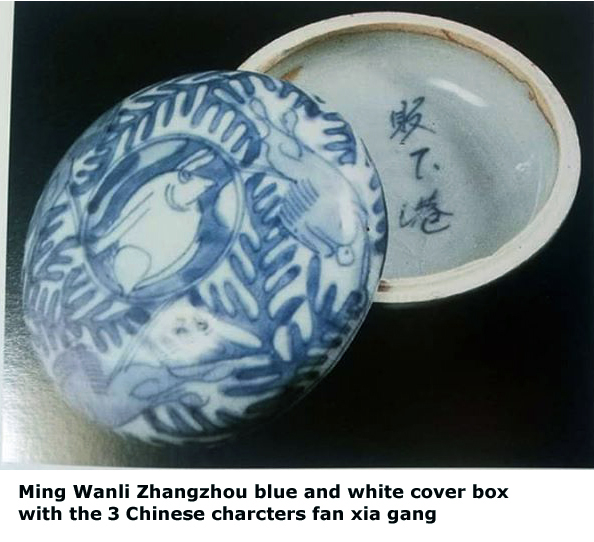 |
Ceramics from Shipwrecks: The Banda Wreck (1615)
Besides ceramics excavated from Banten itself, shipwrecks provide valuable insight into the types of ceramics that were traded there.
In 1979, a team of French archaeologists discovered the Banda wreck, one of four VOC ships that had been anchored in Flic-en-Flac, Mauritius, on March 5-6, 1615. The fleet had departed Banten on December 27, 1614, bound for Holland. During a violent storm, the Banda, Gelderland, and Geünieerde Provinciën lost their anchors and sank. Many Wanli Kraak blue-and-white porcelain pieces were recovered from the wreck.
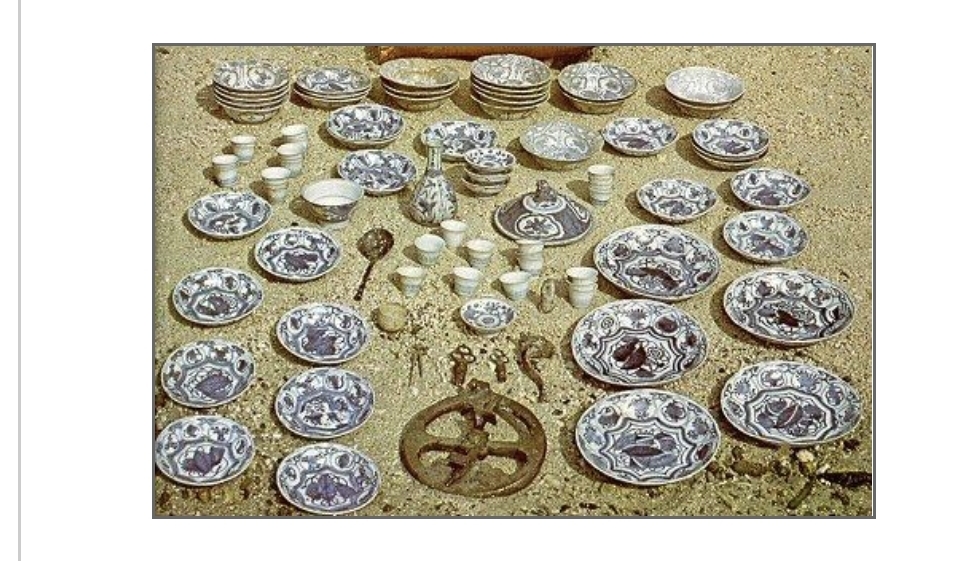 |
| Wanli Blue-and-White Porcelain Salvaged from the Banda Wreck |
Following conflicts with the Dutch over control of the pepper trade, the Dutch East India Company (VOC) captured Jayakarta from Banten in 1619. They renamed it Batavia (now Jakarta), establishing it as the center of their operations and a serious competitor to Banten. This led to Banten’s gradual decline as a major port.
By the 1670s-1680s, war broke out between Batavia and Banten, resulting in a disastrous loss for Banten. The VOC gained control of Bogor and the Priangan Highlands (modern-day West Java), reducing Banten’s power and turning it into a VOC protectorate. Although nominally independent, its influence had waned. In 1813, Banten was formally annexed into the Dutch East Indies.
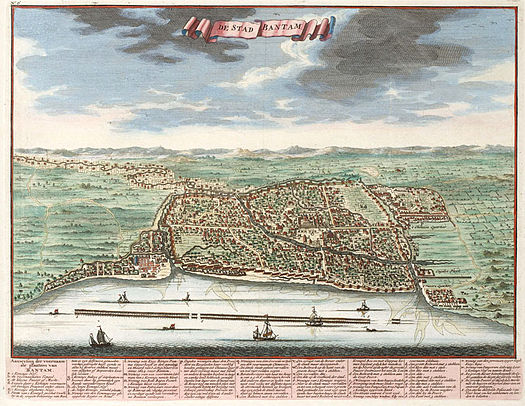 |
| Engraving by François Valentijn, Amsterdam (1726) |
Excavated Ceramics from Banten Serang
A group of ceramic sherds is exhibited in the Singapore NUS Museum. These were collected by Prof. John Miksic from sites in Banten Serang, the political center of the Banten Sultanate, then known as Banten Girang ("Banten-up-the-river").
Examination of these sherds—originating from Jingdezhen and Zhangzhou kilns—indicates that most date to the Wanli/Tianqi period (c. 1590-1630 A.D.). In comparison, ceramics from earlier (Jiajing) and later (post-Tianqi) periods are less common. This aligns with the understanding that Banten’s golden age of trade occurred during the late 16th to early 17th century.
There is a group of sherds exhibited in the Singapore NUS Museum. They were gathered by Prof. John Miksic from sites in Banten Serang, political centre of the Banten Sultanate. It was then known as Banten Girang, meaning "Banten-up-the-river" owing to its location. Examination of the group of sherds from Jingdezhen and Zhangzhou showed that majority could be dated to the Wanli /Tianqi period, mainly around 1590/1630 A.D. In comparison, those dated earlier to Jiajing or later after Tianqi are fewer in number. It basically reflected the level of trade during various phases and tallied with the general consensus that Banten enjoyed its golden period of trade during the late 16th/early 17th cent.
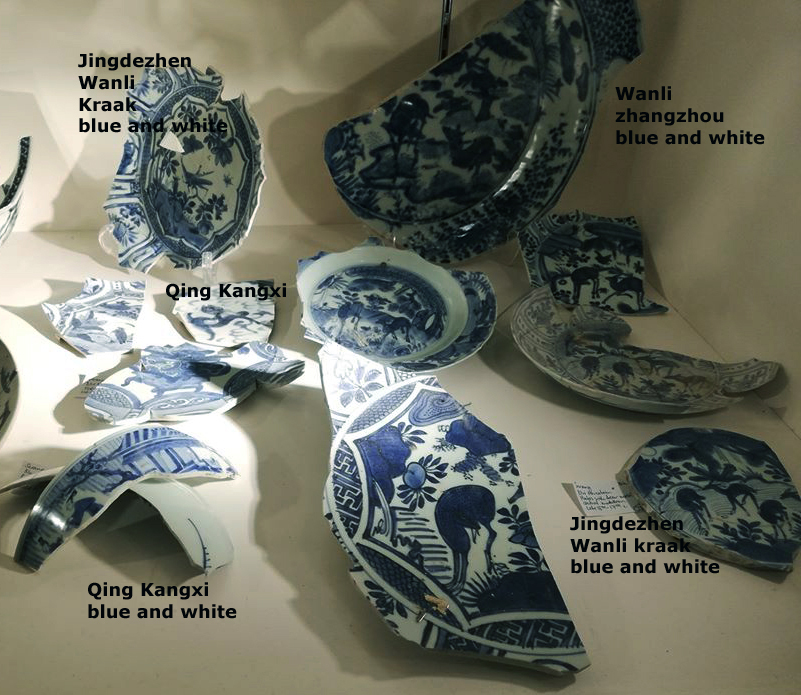 |
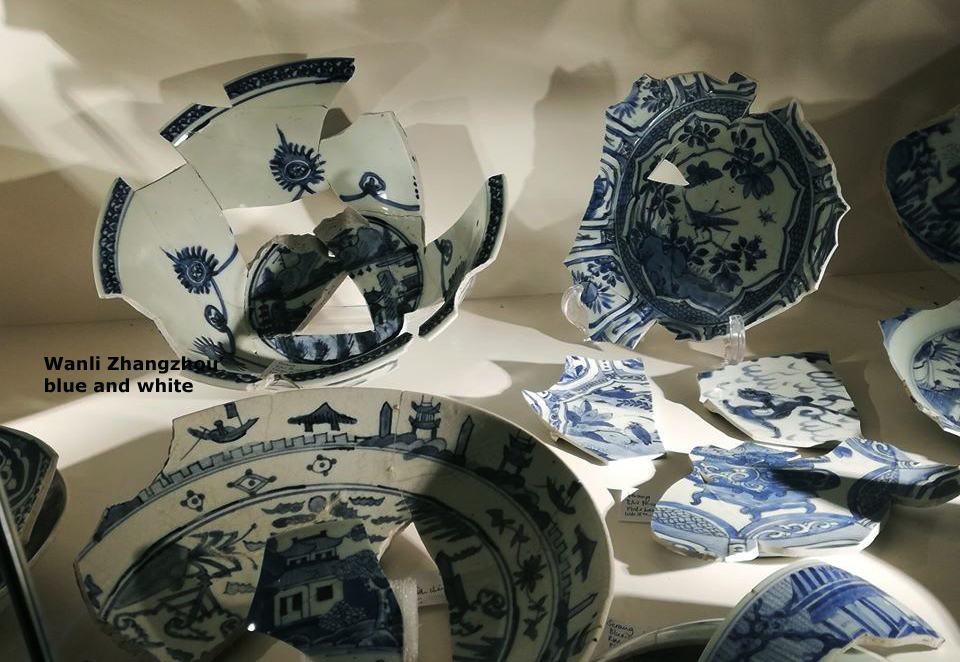 |
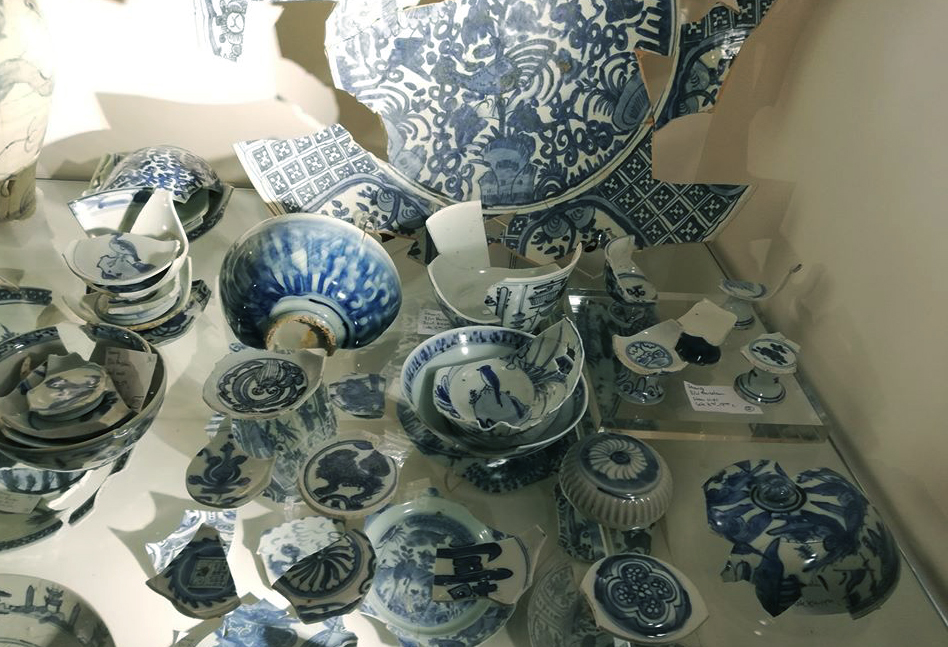 |
| Ming Wanli/Tianqi Jingdezhen and Zhangzhou Blue-and-White Ware |
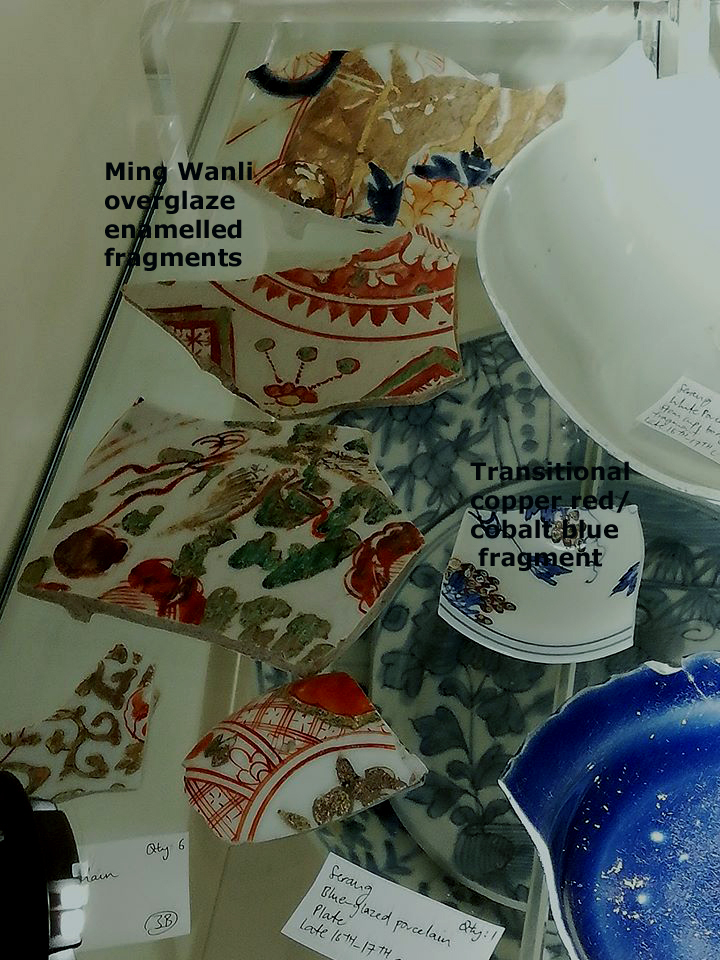 |
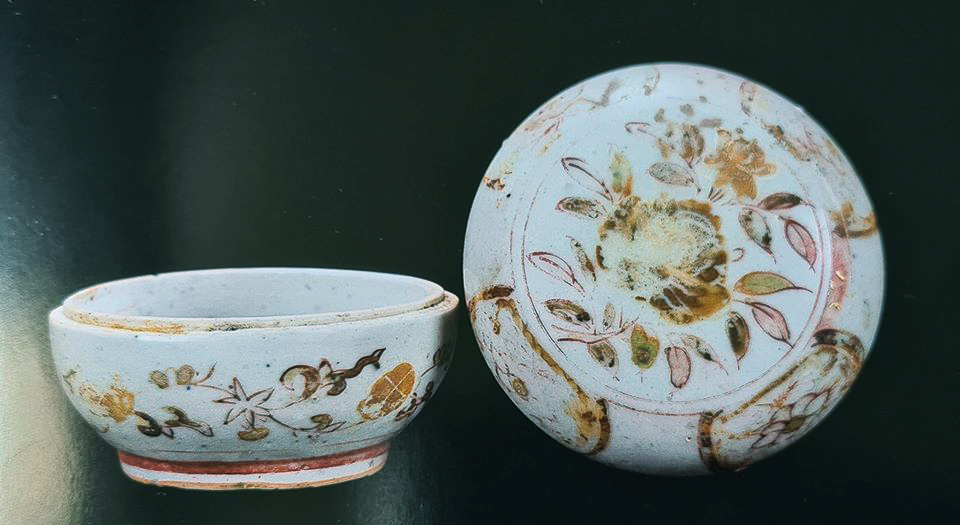 |
|
Ming Wanli Overglaze Cover Box from the Nanao Wreck (For Comparison) |
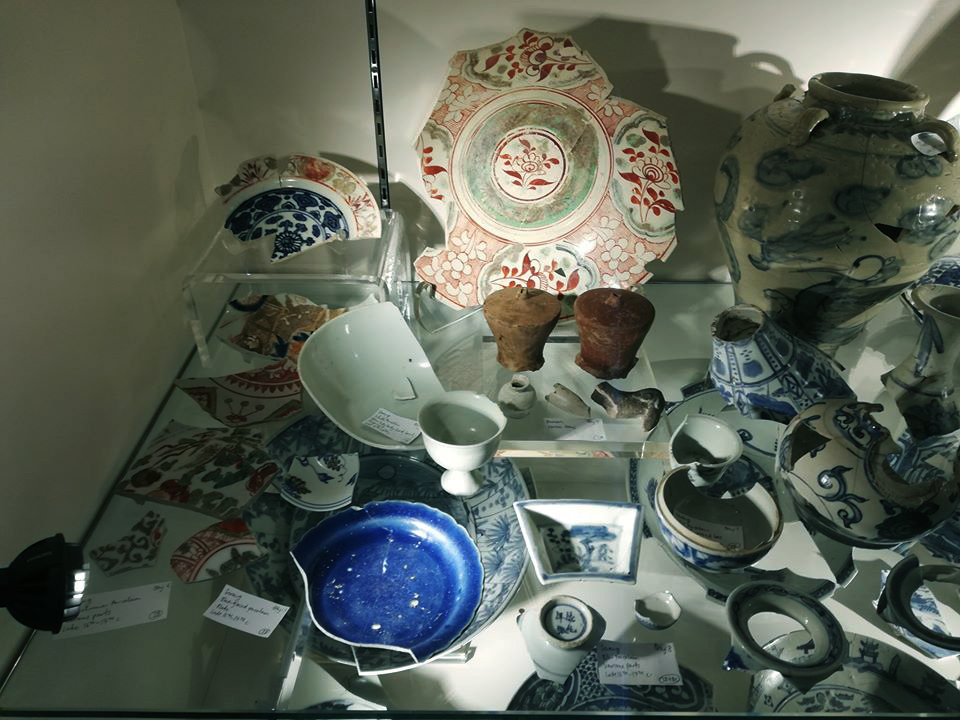 |
|
More Ming Fragments Found at Banten Serang g |
Ming Dynasty Ceramics in the Jakarta Antique Market (c. 2004)
Around 2004, many ceramic fragments surfaced in the Jakarta antique market, reportedly from a site in Banten. Below are some Jingdezhen Wanli pieces of high quality:
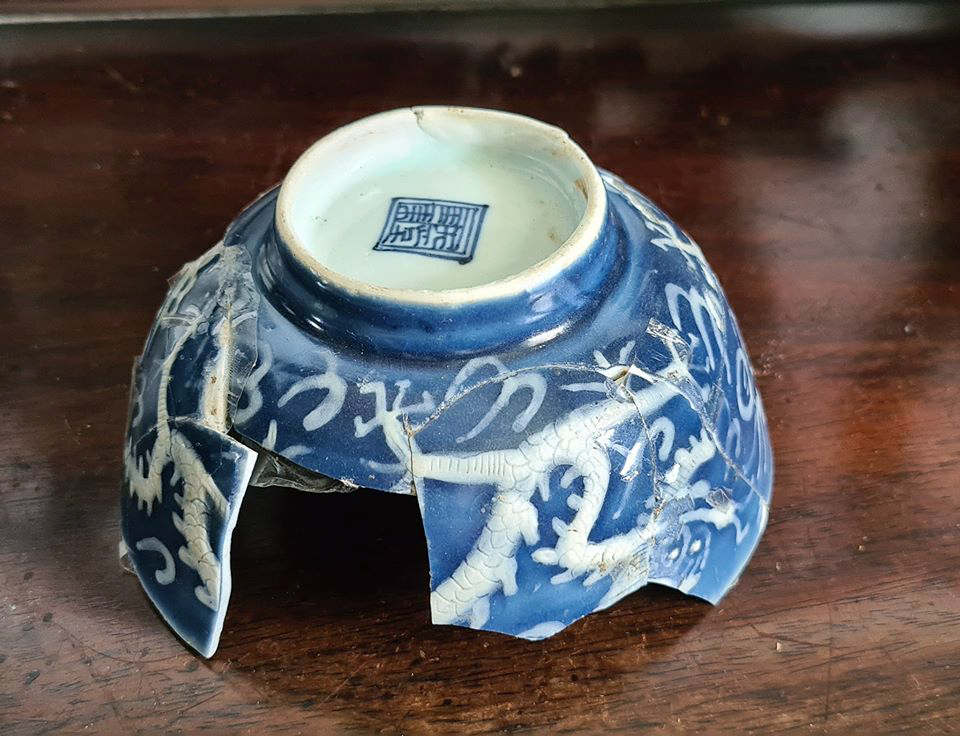 |
| A rare Ming Wanli monochrome blue bowl with white slip dragon decoration |
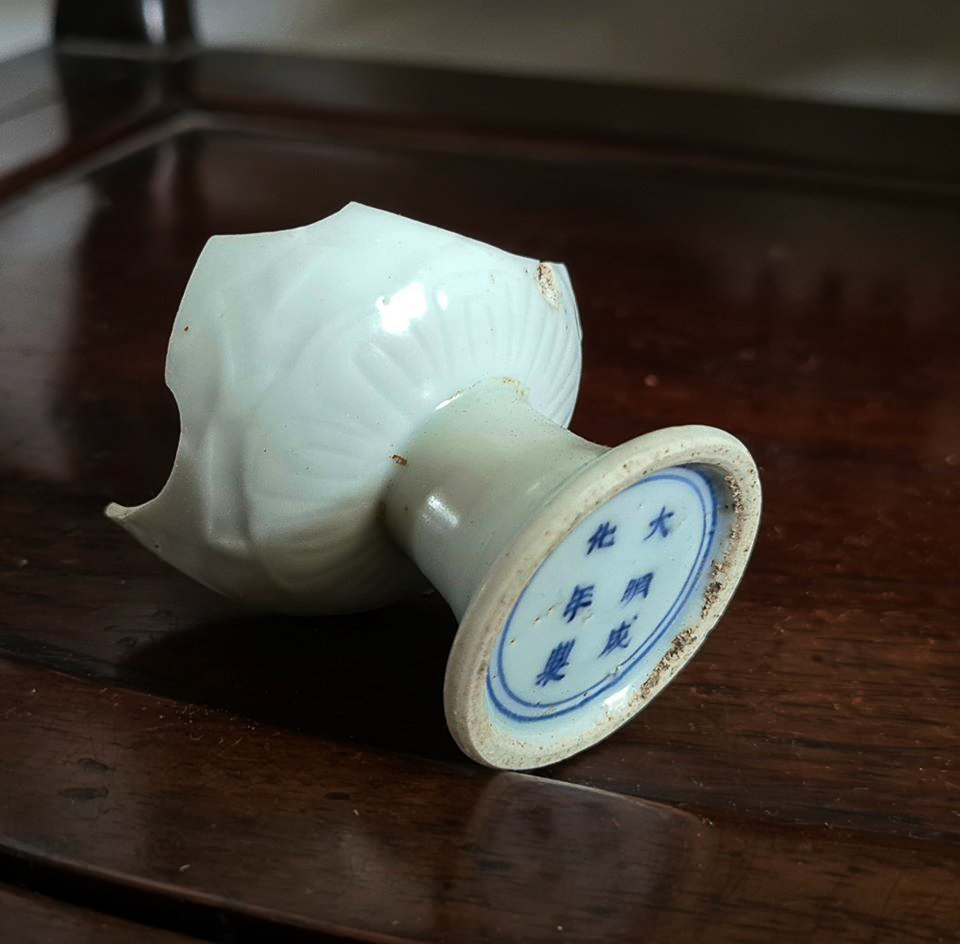 |
| An exquisite Late Ming white glaze stem cup with moulded decoration |
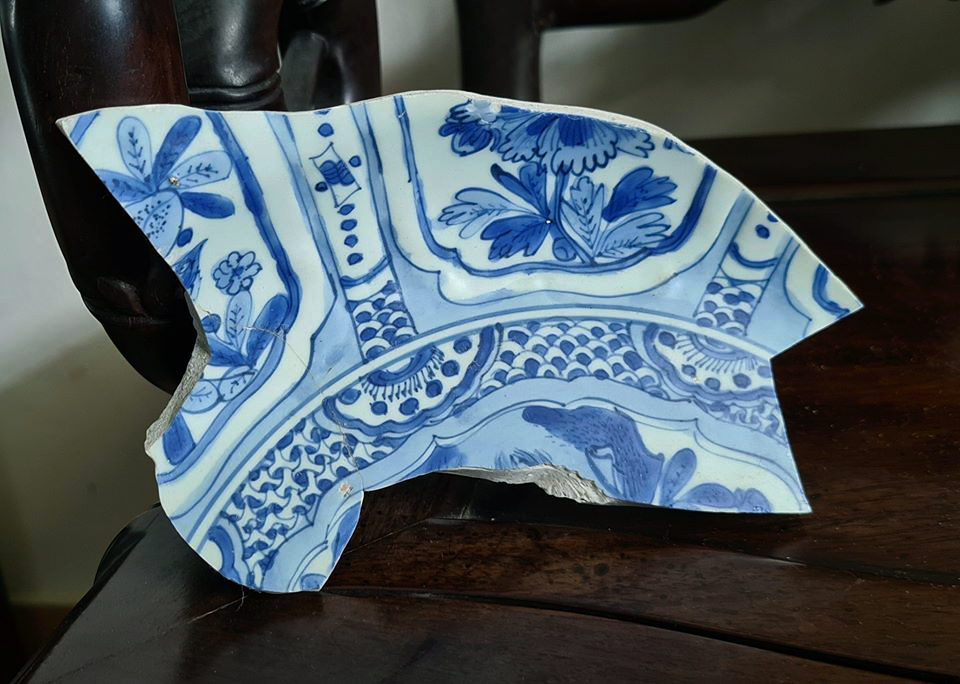 |
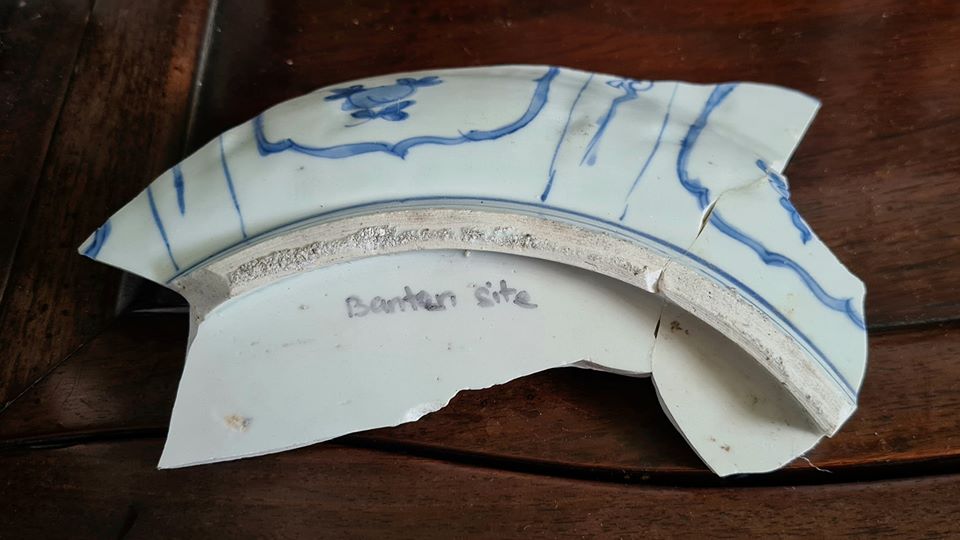 |
| Ming Wanli Kraak blue and white plate fragment |
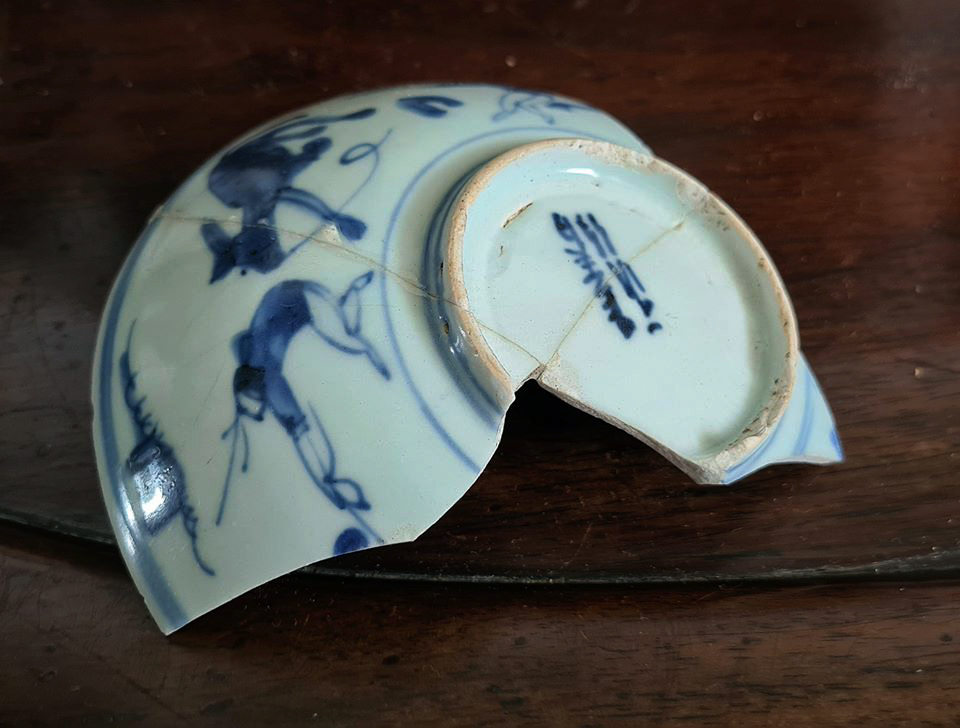 |
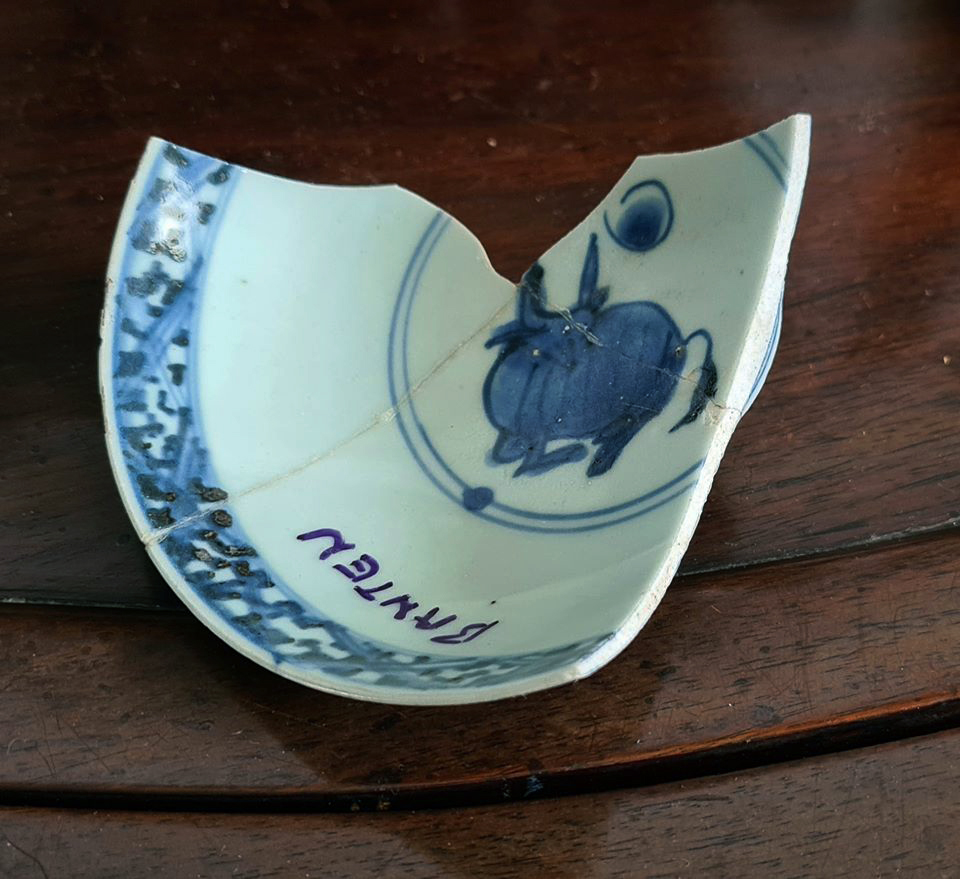 |
| Ming Longqing/Early Wanli blue and white fragment |
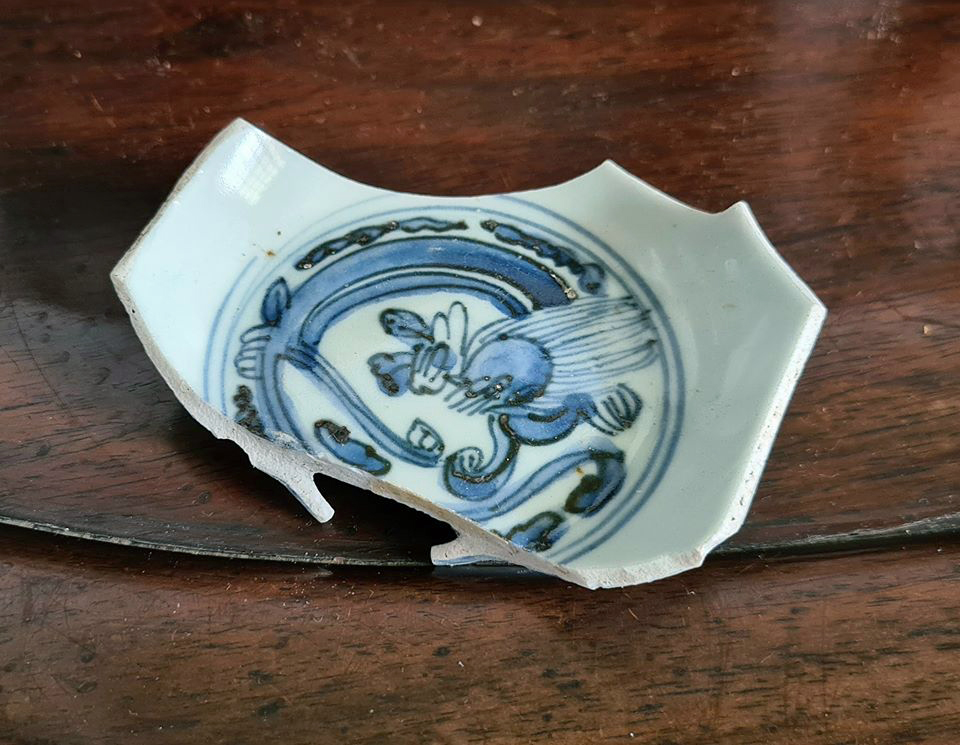 |
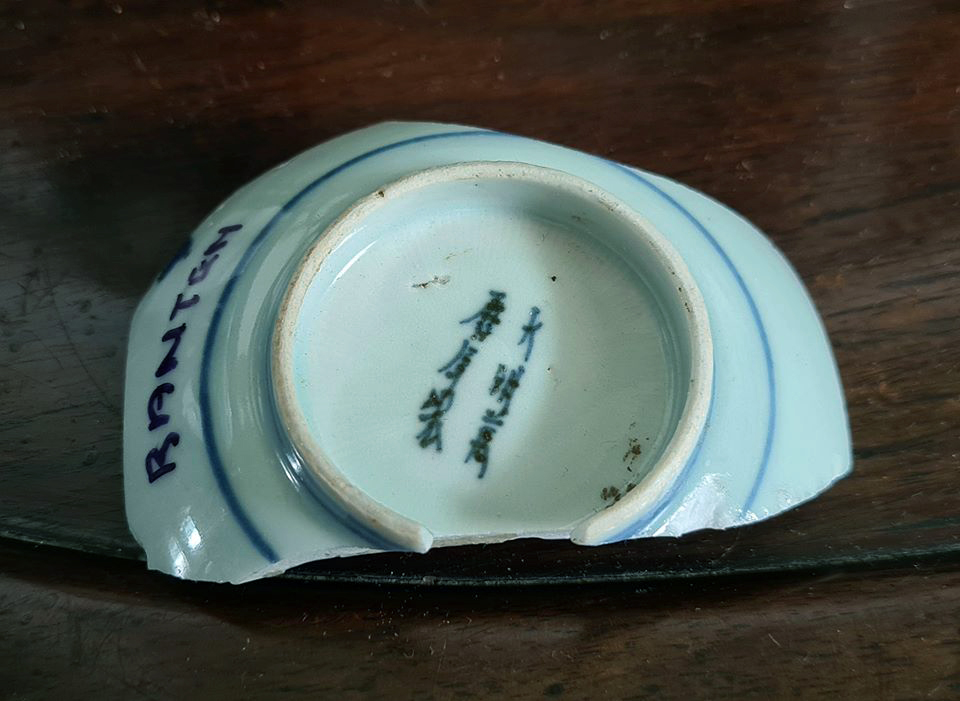 |
| Ming Wanli mark and period bowl fragment |
 |
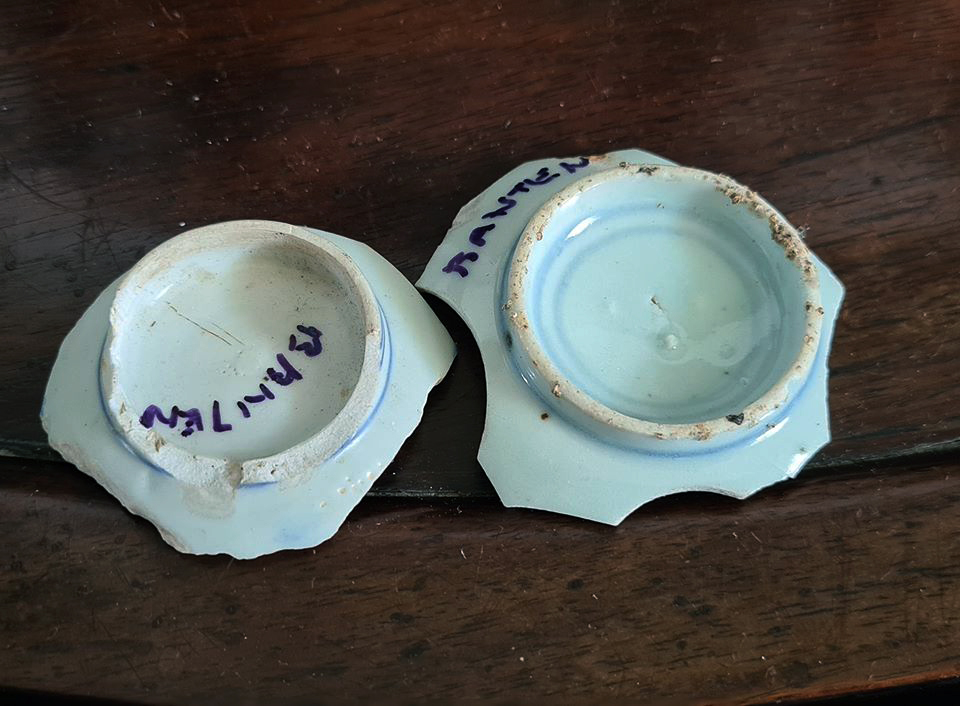 |
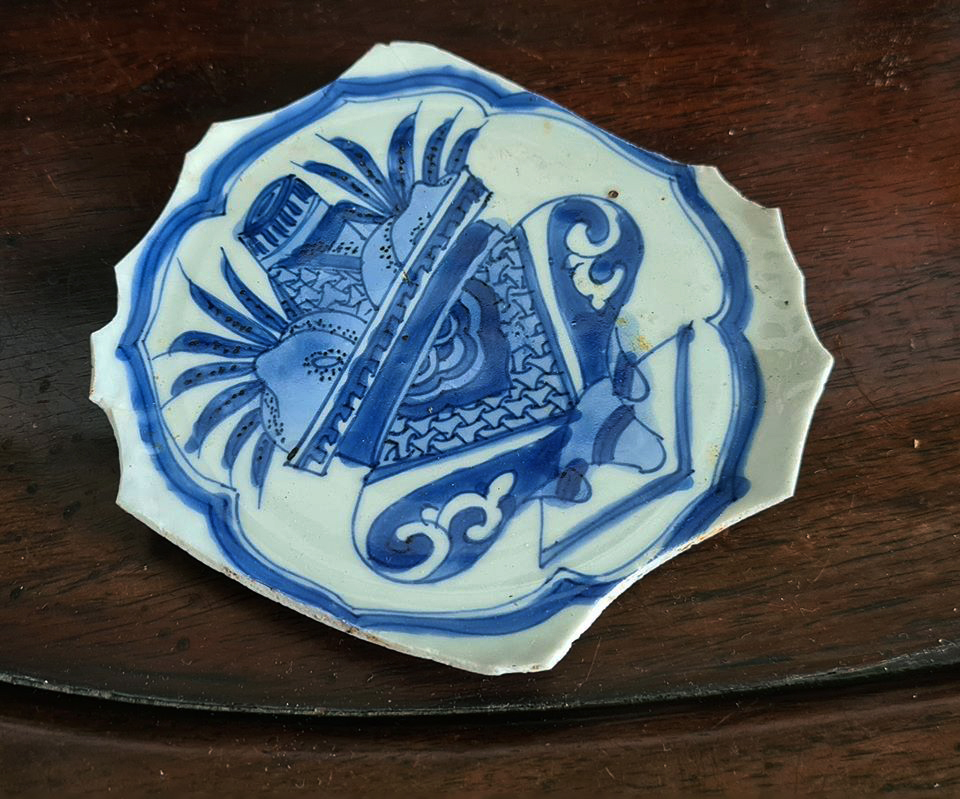 |
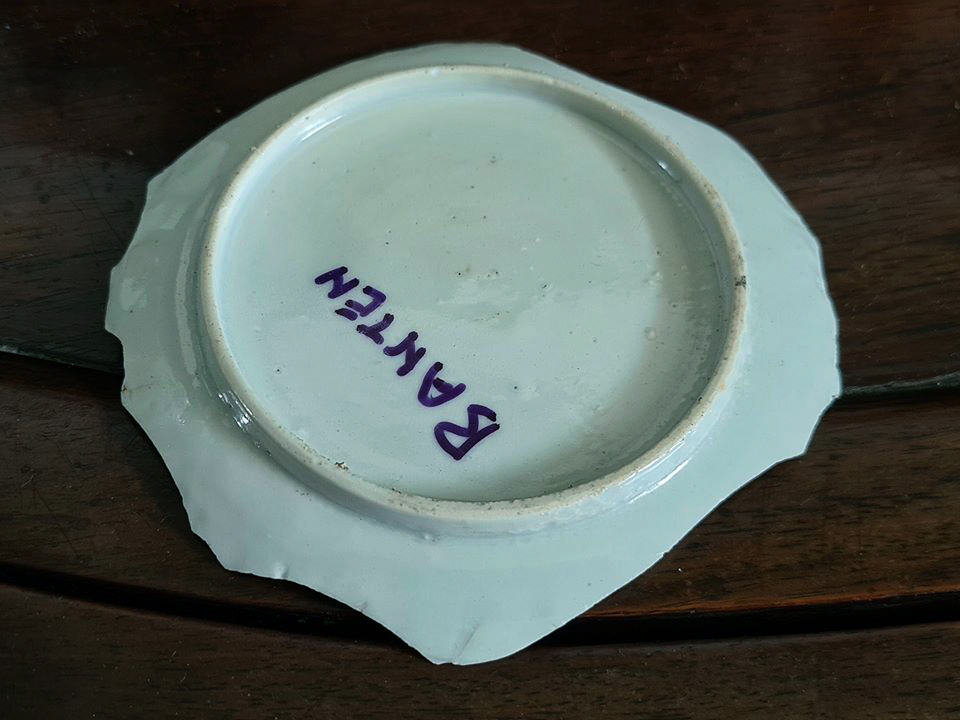 |
 |
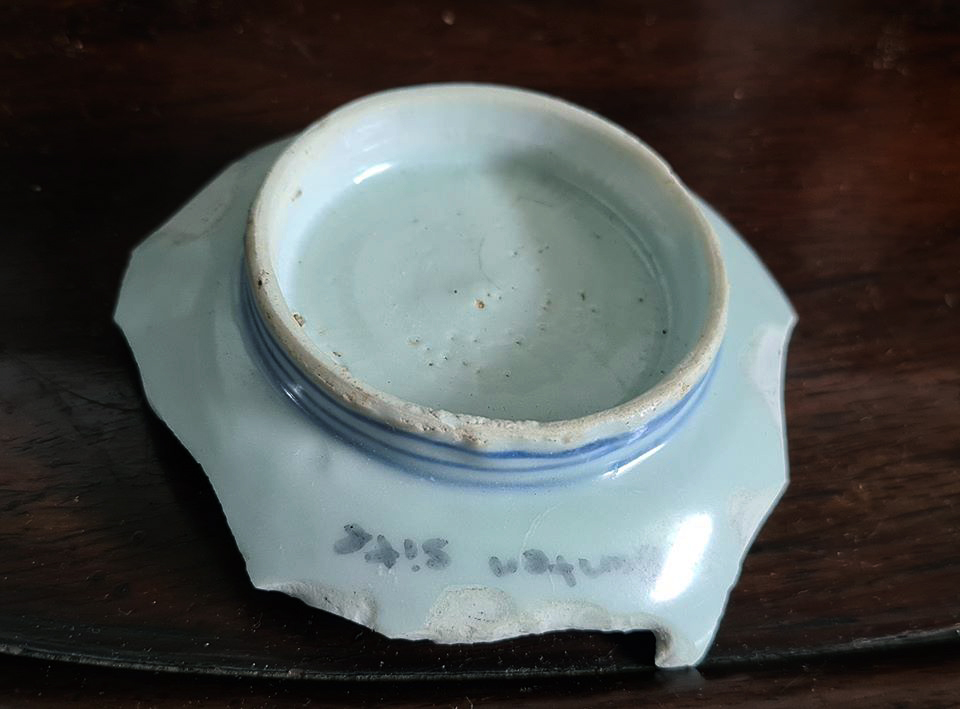 |
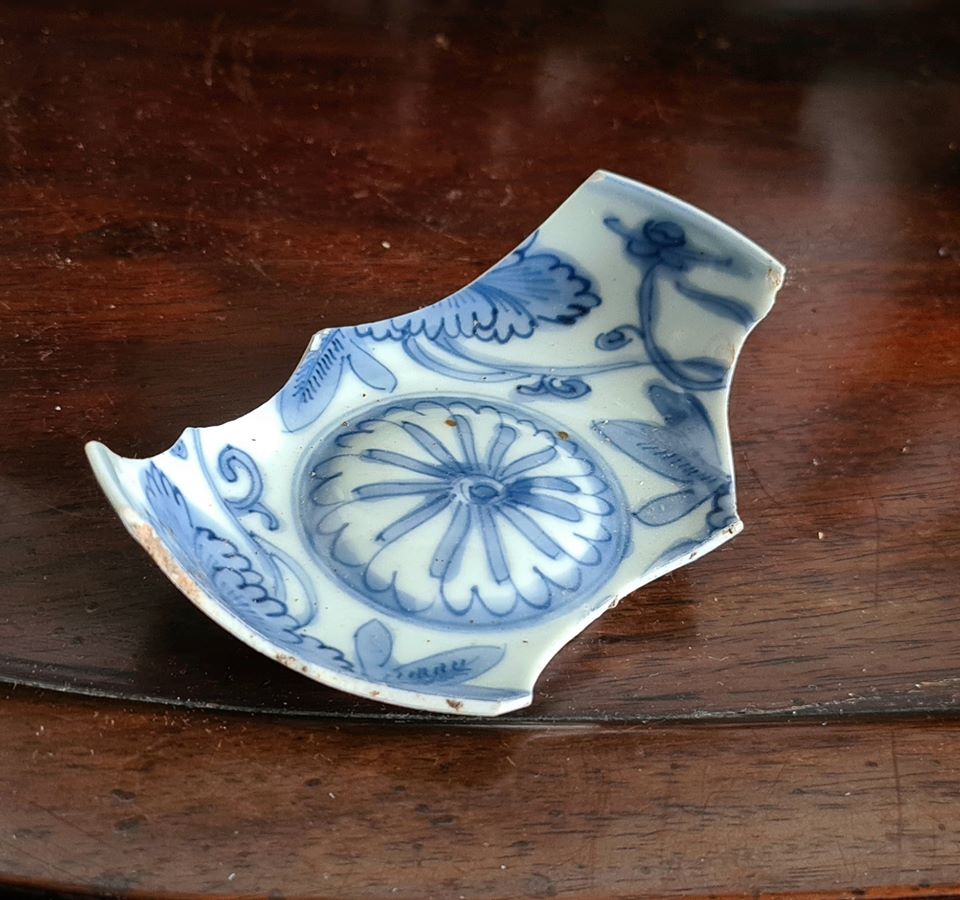 |
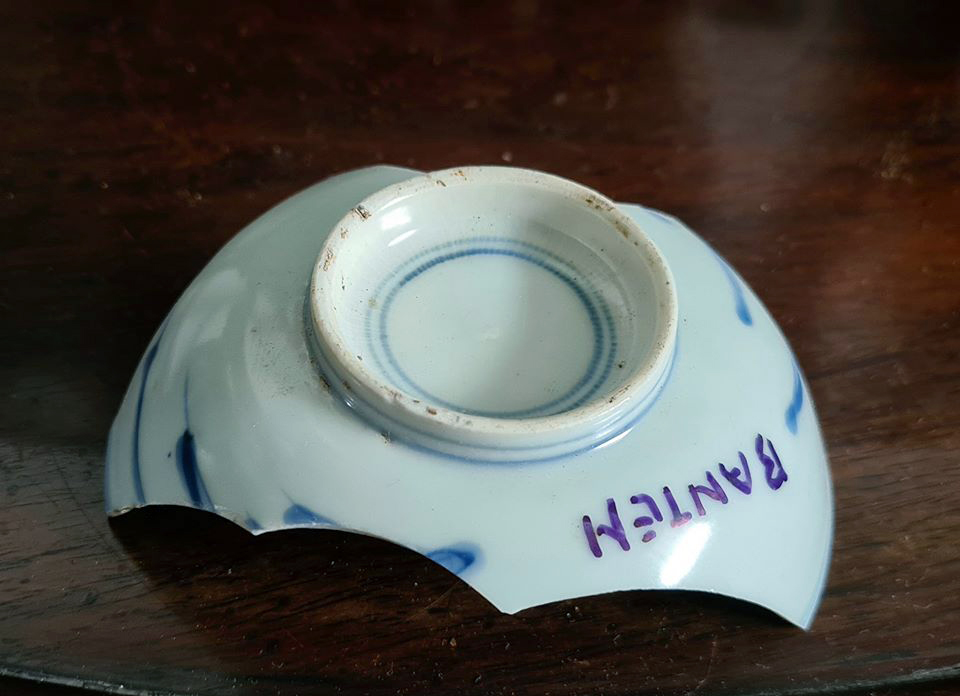 |
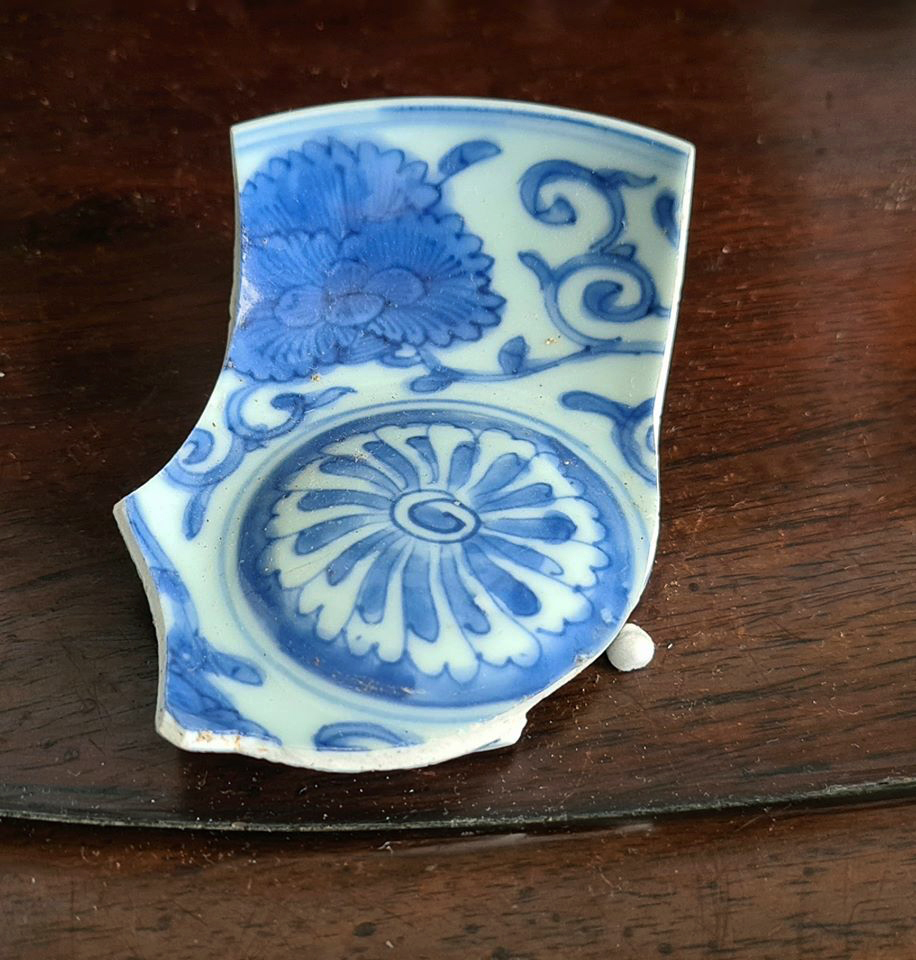 |
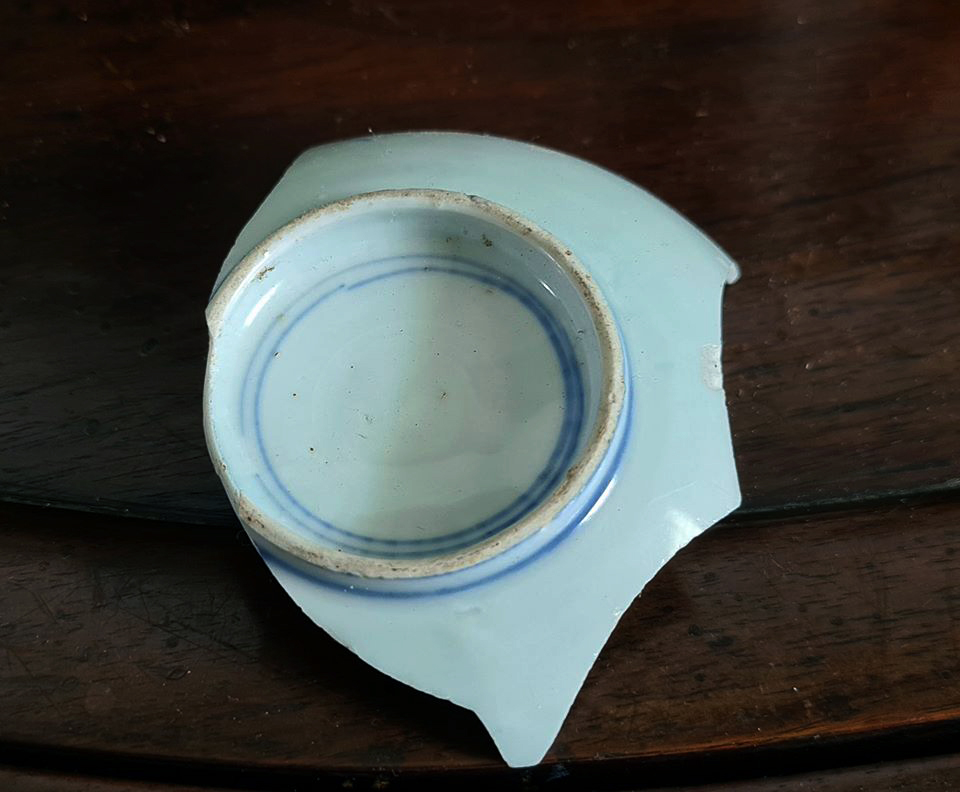 |
| Some fine examples of kraak style blue and white bowl fragments |
 |
| A Kendi and two vases from Banten site |
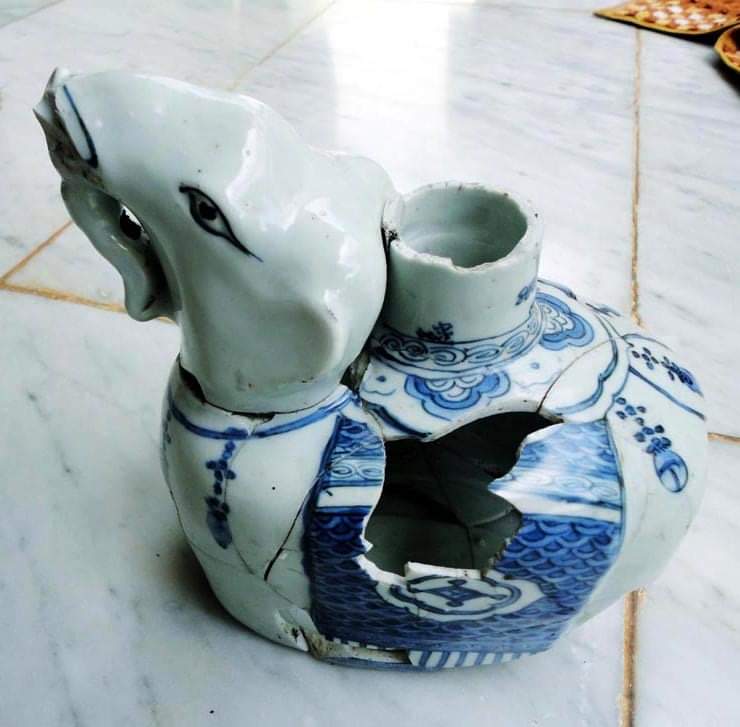 |
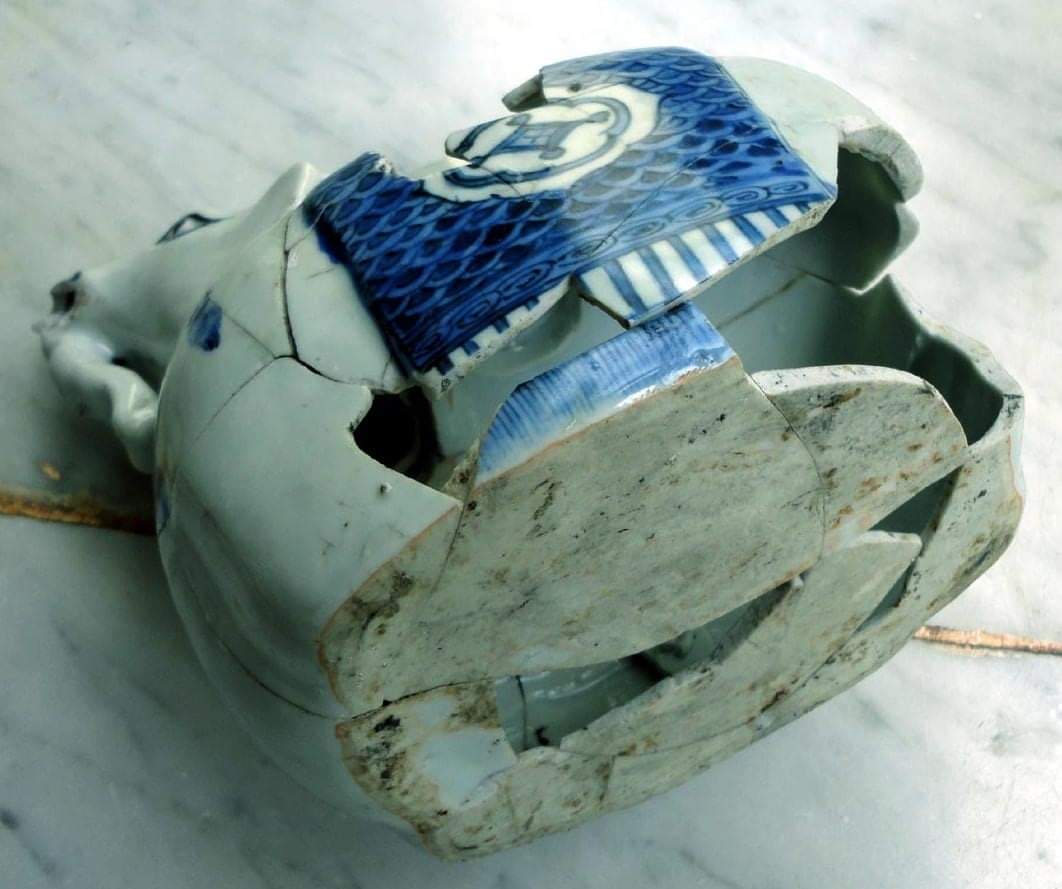 |
| Wanli elephant-shaped Kendi |
Conclusion
The ceramics found in Banten and the surrounding regions, both from excavations and shipwrecks, provide valuable insights into the vibrant maritime trade network of the 16th and 17th centuries. As a major trading hub, Banten facilitated the exchange of luxury goods, including high-quality Chinese ceramics, with merchants from across Asia and Europe. The discovery of Ming dynasty porcelain in Banten, along with the Banda shipwreck’s Wanli Kraak ware, further highlights the extensive reach of Chinese ceramics in global trade during this period.
However, Banten’s prominence gradually declined due to Dutch expansion and competition from Batavia, ultimately leading to its incorporation into the Dutch East Indies. Despite this, the material culture left behind—ceramics, artifacts, and historical records—continues to shed light on Banten’s legacy as a key player in early modern maritime trade. These discoveries remain essential for understanding the region’s rich history and its connections to the global economy of the time.
Written by: NK Koh (April 26, 2020), updated: 2 Mar 2025